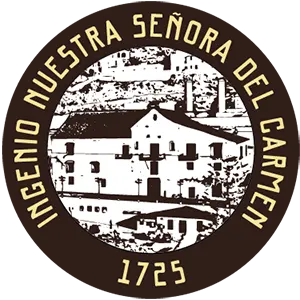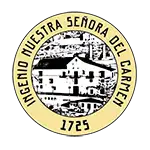
Company
traditional factory
Fifty years after the fateful events of the Peñón de Frigiliana (June 1569), the fifth Lord of Frigiliana, Iñigo de Lara, embarked on the repopulation of the town, using the cultivation of sugarcane as an economic driver. This is the story written by the historian of the House of Lara, collected by Purificación Ruiz García: In the following years, the Count applied himself to advance the population of his place in Frigiliana, where he built new houses, brought neighbors, planted sugarcane and established a mill for a sugar mill. Quite possibly from 1725 and on the aforementioned sugar mill, the Count of Aguilar y Frigiliana was building a mill in this population (...) for which he requested to cut the wood from the meadows of Zafarraya and Alhama, beginning the process under the protection of the Enlightenment of construction on the pre-existing mill that remains today and was already operating in 1728, as reflected in the founding of the mayorazgo made by the Count of Aguilar y Frigiliana, Iñigo de la Cruz, known as the San Raimundo Mill. However, over time, the low profitability of sugar factories led to the abandonment of many mills and to the appearance in the 1840s of the so-called hydraulic force machines for the production of sugarcane molasses, of which five were built in Frigiliana. Their owners united, and on December 15, 1928 the society “Sociedad De la Torre” was formed, and the San Raimundo sugar cane mill, which was always called the Fernán Núñez sugar cane mill, was renamed Nuestra Señora del Carmen. This is the name we continue to use today. Andalusian sugarcane molasses is still made in the same traditional way, a relic of our past, a gastronomic witness of a town and part of its identity.
Fernando Rueda in his book “LA "mieldecaña" EN LAS COCINAS TRADICIONAL Y CREATIVA”
traditional factory
Fifty years after the fateful events of the Peñón de Frigiliana (June, 1569), the fifth Lord of Frigiliana, Iñigo de Lara, embarked on the repopulation of the town, taking the cultivation of sugarcane as an economic argument and this is how the historian of the House of Lara, collected by Purificación Ruiz García: In the following years, the Count applied himself to advance the population of his place in Frigiliana, where he built new houses, brought neighbors, planted sugarcane and established a mill for a sugar mill. Quite possibly from 1725 and on the aforementioned sugar mill, the Count of Aguilar y Frigiliana was building a mill in this population (...) for which he requested to cut the wood from the meadows of Zafarraya and Alhama, beginning the process under the protection of the Enlightenment of construction on the pre-existing mill that remains today and was already operating in 1728, as reflected in the founding of the mayorazgo made by the Count of Aguilar y Frigiliana, Iñigo de la Cruz, known as the San Raimundo Mill. The low profitability of the sugar factories, as seen above since the beginning of the s. XIX, leads to the abandonment of many mills and to the appearance in the 1840s of the so-called hydraulic power machines for the production of cane molasses, of which five were built in Frigiliana. Its owners will unite and On December 15, 1928, the De la Torre Society was formed (...) The San Raimundo mill, which was what the Fernán Núñez mill was always called, until its new name of Nuestra Señora del Carmen, name with which that precious honey continues to be made without the intervention of bees, a relic of our past, a gastronomic witness of a people and part of its identity character.
Fernando Rueda in his book “LA "mieldecaña" EN LAS COCINAS TRADICIONAL Y CREATIVA”
The mill factory of Frigiliana is currently the only cane molasses factory that is still active in Europe, the truth is that it has been operating uninterruptedly since 1630, almost four centuries of sweet history.
RTVA South Channel. Andalusia Kitchen Channel
Do you like Andalusian Sugarcane Molasses? Did you know that the only factory of this rich nectar is in Frigiliana, Malaga? Visiting this factory is like taking a trip back in time to the historical past of the sweet taste of molasses.
Spain Direct. Spanish Television TVE
Last traditional factory, a relic of our past, a gastronomic witness of a town and part of its identity and character.
Fernando Rueda García, historian and gastronomy expert
"de la torre" society
De la Torre society was founded in 1928 by acquiring a mill (traditional factory) where molasses have been made since 1630 and changing its name from San Raimundo Mill to Ingenio Nuestra Señora del Carmen (by European regulations it must be called "concentrated juice of sugar cane" instead of cane honey).
From then until now, the company continues to fight so that this heritage does not disappear and that the ancestral recipe of Frigiliana's sugarcane molasses endures, with all its traditional dishes, as well as encouraging innovation in the new generations.
Currently the only cane honey factory that exists in continental Europe and is known worldwide for its excellent quality.
"de la torre" society
De la Torre society was founded in 1928 by acquiring a mill (factory) where molasses have been made since 1630 and changing its name from San Raimundo Mill to Nuestra Señora del Carmen Mill (by European regulations it must be called "concentrated juice of sugar cane" instead of cane honey).
From then until now, the company continues to fight so that this heritage does not disappear and that the ancestral recipe of Frigiliana's sugarcane molasses endures, with all its traditional dishes, as well as encouraging innovation in the new generations.
Currently the only cane honey factory that exists in continental Europe and is known worldwide for its excellent quality.



